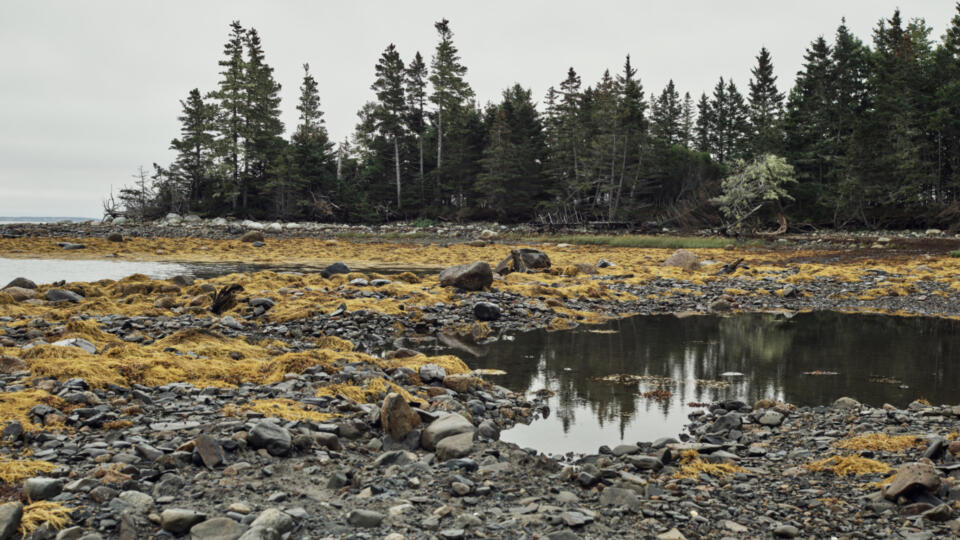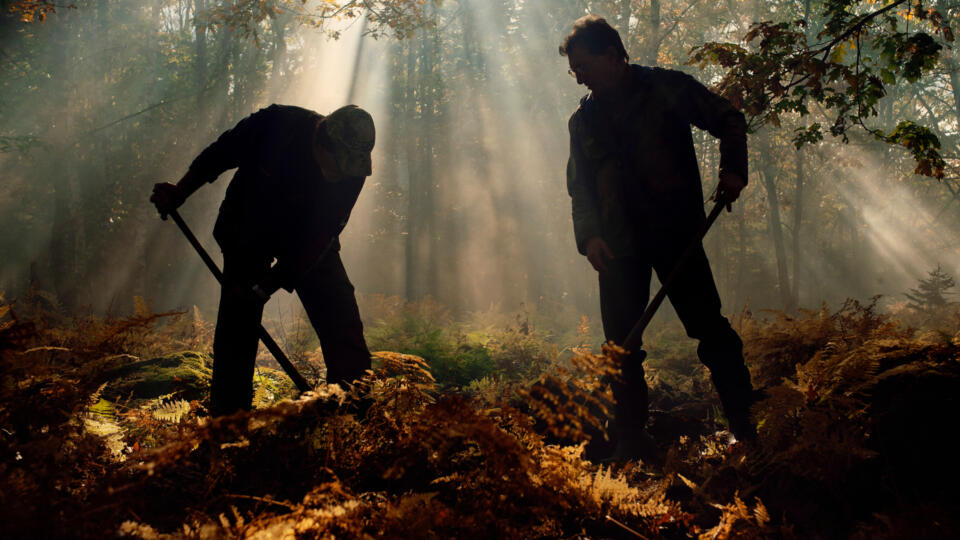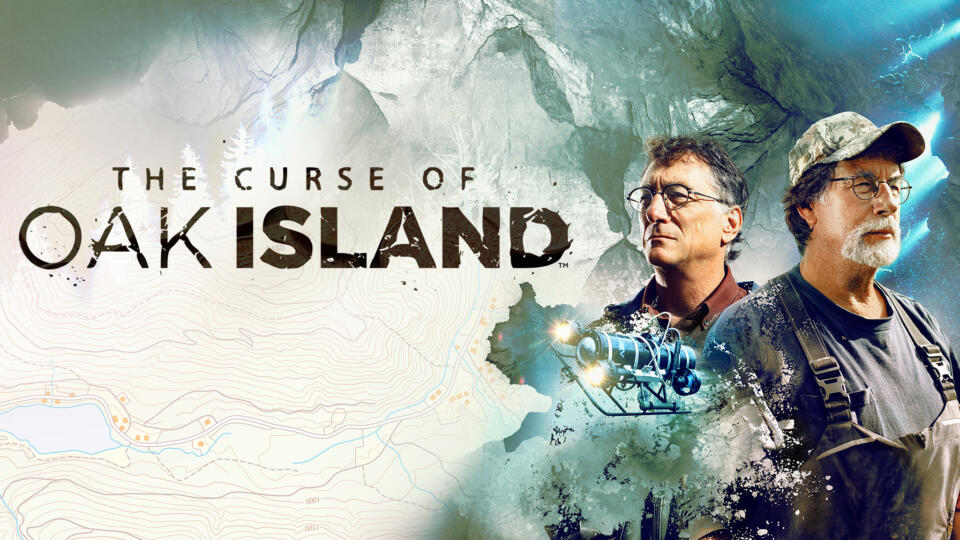When Michigan brothers Rick and Marty Lagina bought a 50 percent stake in the company that owns the famed Oak Island in 2006, they became the latest in a long line of treasure hunters who have spent more than 220 years trying to unearth untold riches suspected of being hidden in its confines.
Where Is Oak Island Located?
Located on the south shore of the Atlantic coast of Nova Scotia, Canada, Oak Island is one of the 300-plus islands that make up Mahone Bay. Many believe a massive treasure is buried in the 140-acre forest-covered area due to the legends and stories that have emerged about the island since the late 18th century.

Theories About Oak Island
Theories abound as to who may have stashed a bounty there—from infamous pirates Captain Kidd and Edward “Blackbeard” Teach to secret societies like the freemasons and Knights Templar to philosopher and scientific thinker Francis Bacon burying original Shakespeare manuscripts. But, as yet, no hunter has struck it rich.
Oak Island has long exuded mystery. From its early discovery, it was the only land in the area covered in red oak trees. (Because a black ant infestation largely destroyed the oaks in the 1800s, the island is now covered mostly by spruce trees and shrubs.) During an early dig expedition, a stone discovered 90 feet deep bore a mysterious inscription that one decoder interpreted to read, "Ten feet below two million lies buried." Island lore includes tales of hauntings and eerie lights—and a widespread prediction that no treasure will be found until seven treasure seekers have died trying to find it. The current toll stands at six.
The first survey of the island—which is about one mile long by less than a half-mile wide took place between 1762 and 1765, when it was divvied up into 32 four-acre lots. And while a 1776 map by British cartographer J.F.W. Des Barres called it Gloucester Isle, the name “Oak Island” had been used on land-transfer deeds even before that time, according to D'Arcy O'Connor, author of The Secret Treasure of Oak Island: The Amazing True Story of a Centuries-Old Treasure Hunt.
The Earliest Owners of Oak Island
Most reports credit discovery of the island’s “Money Pit,” the focal point of the treasure hunt, as having occurred in 1795, when teenager Daniel McGinnis and two friends rowed to the island for a little exploration and came across a large depression in the ground. McGinnis thought this unusual-looking area signaled a pirate treasure hiding place. Mahone Bay, after all, had been a notorious pirate haven during the 17th and early 18th centuries.
According to O’Connor, the teens uncovered a shaft, and as they continued to dig, came across oak logs, flagstones and wooden platforms placed at 10-foot intervals. "They had launched what would become the world's longest and most expensive treasure hunt," O’Connor writes.
The three eventually purchased land on Oak Island, as did Samuel Ball, a formerly enslaved person, writes Randall Sullivan in The Curse of Oak Island: The Story of the World's Largest Treasure Hunt. Ball came to own nine lots, making him, for a time, the island’s biggest landowner. "For more than a century and a half, there have been accusations that the young men who discovered the Money Pit (along with Samuel Ball) did in fact find a treasure there,” Sullivan writes, “which explained their apparently 'sudden prosperity' in the early nineteenth century."

Challenges of Exploring Oak Island
In the following years, according to Dan Conlin, author of Pirates of the Atlantic: Robbery, Murder and Mayhem Off the Canadian East Coast, treasure hunters went from using shovels and picks in the 18th century to steam pumps and drill bits in the 19th century to open-pit mining and bulldozers in the 20th century to the high-tech tools employed today. But despite the advances in technology, flooding and cave-ins have caused hunter after hunter to give up the quest.
"The persistent flooding and odd bits of wood and clay have convinced treasure hunters and writers that the island hides an elaborate engineering work of secret flood tunnels, multilayer platforms and hidden caverns," Conlin writes, adding that much of the island is made of a type of limestone that can cause sinkholes that fill with clay, silt and logs during storms.
But that hasn’t stopped a number of attempts at finding treasure there.
According to Gordon Fader and Joy A. Steele, authors of The Oak Island Mystery Solved, several companies participated in digs of the Money Pit and its surrounding area starting in the early 1800s, including the Old Gold Salvage and Wrecking Company, which began digging in 1909.
A Famous U.S. President Among Treasure-Seekers
That effort would spark the interest of a young Franklin D. Roosevelt, who bought stock in the company years before becoming the 32nd president of the U.S. He made several short visits to Oak Island during Old Gold’s time there.
A 1926 story by Catherine MacKenzie in The New York Times noted six known organized attempts in 131 years, and marveled at the tunnels made by unknown diggers that treasure hunters later unearthed.
"Whoever they were, they had men enough to dig a hole a hundred feet deep and dozen feet across—no light undertaking in the flint-like clay of Oak Island," MacKenzie wrote. "...Still more amazing, they had the skill to plan and build an elaborate system of drains connecting the pit with tidewater, which have defeated the efforts of engineers and flooded out company after company of determined treasure hunters for 100 years."
What's Happening on Oak Island Now?
Dan Blankenship and David Tobias bought the land in the 1960s, later partnering with the Lagina brothers. As chronicled on The History® Channel series The Curse of Oak Island, discoveries have included manmade structures that pre-date the Money Pit, evidence of wooden casks, a gemstone brooch dating to the 16th century, a Spanish coin from the 1650s and a 14th-century lead cross, among others.
